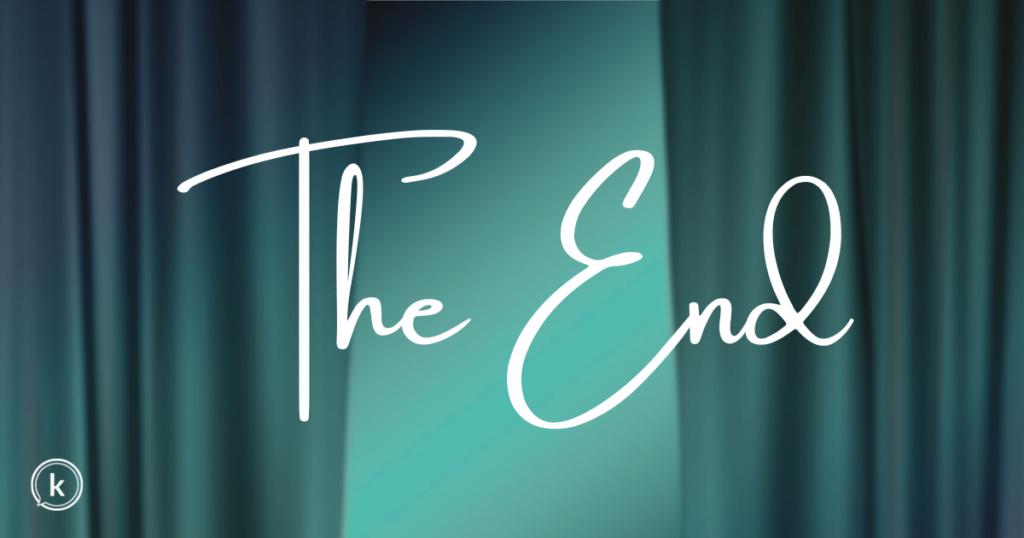How (not) to end your presentation

Great stories deserve great endings.
We demand great endings from movies. We criticize them to no end when they don’t leave us with a sense of closure. Granted, some screenwriters strive to agitate their audiences with some form of an unforgettable cliffhanger (looking at you, Inception). But for the most part, the stories we love typically end with resolution that leaves us feeling satisfied. Even Sixth Sense, with its mind-bending conclusion, affords watchers some sense of restored world order.
Audiences need that same sense of resolution from our presentations. Yet too many speakers (founders, especially) abruptly arrive at their last slide and say “yeah, uh, I guess that’s it” or “any questions?”.
If Gone with the Wind or Indiana Jones and the Raiders of the Lost Ark had left off the way most presentations end, we wouldn’t still be talking about them decades after their release (at least not positively, anyway!).
While we’re not trying to win an Academy Award with our presentations, we do want them to be memorable. And that means adhering to a storytelling structure that includes an effective ending.
The psychological principle of recency underscores why this is so important: we remember best what we heard last. If the last thing your audience hears is an ambiguous, lackluster version of “the end” (which sounds a lot like “I’m out of slides”) then that’s what they’re going to remember. And that, my friends, is not the way to persuade or inspire anyone to do anything.
The saddest part is how easily this can be corrected.
To craft the ideal conclusion, I advise my clients to use the following methodology:
1 Before doing any work on your presentation, start with the end in view and craft two items for your conclusion:
A // What do you want them to do? How do you want your stakeholder to respond to your message? What’s your goal? Draft this into a single-sentence, specific, clear call to action.
B // How will their world be different if they adopt your idea? Describe this “beautiful future” in detail—what will it look like? Be specific; write it out to be incorporated later.
2 Develop your content using the items above as a reference point. Ensure you’re sharing the content that will help your audience get to that future state.
3 Map your content into a storytelling structure of your choosing. The general flow will look a little like this:
OPENING (For more on creating a great opening for your talk, read this.)
BODY of presentation content
QUESTIONS and GRATITUDE (as appropriate)
CALL TO ACTION (from 1A)
BEAUTIFUL FUTURE (from 1B)
As you craft your next presentation, begin with the end in mind: develop the call-to-action and “beautiful future” before drafting anything else. Place it at the end of your presentation.
By concluding your message with a vision of the beautiful future your stakeholder(s) will experience if they adopt your idea—instead of “any questions?”—you leave them with a desire for that future. They’ll be much more likely to remember it and agree with you—which also makes you more memorable as a presenter.
For more on storytelling structure here’s a great resource.
